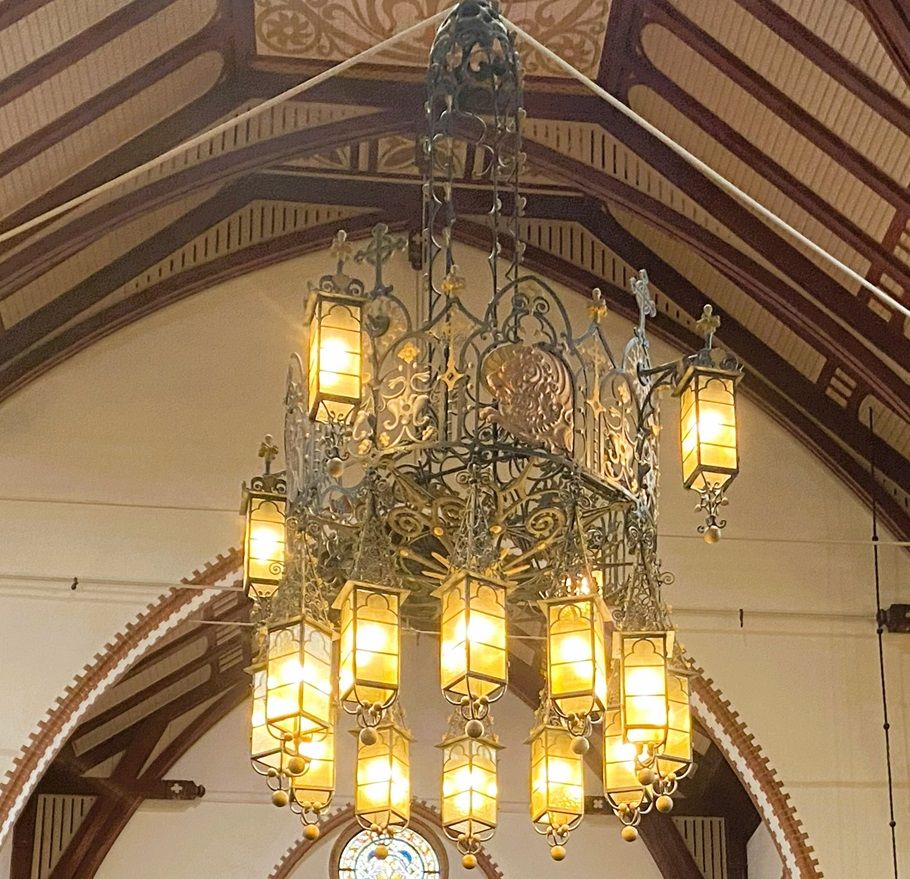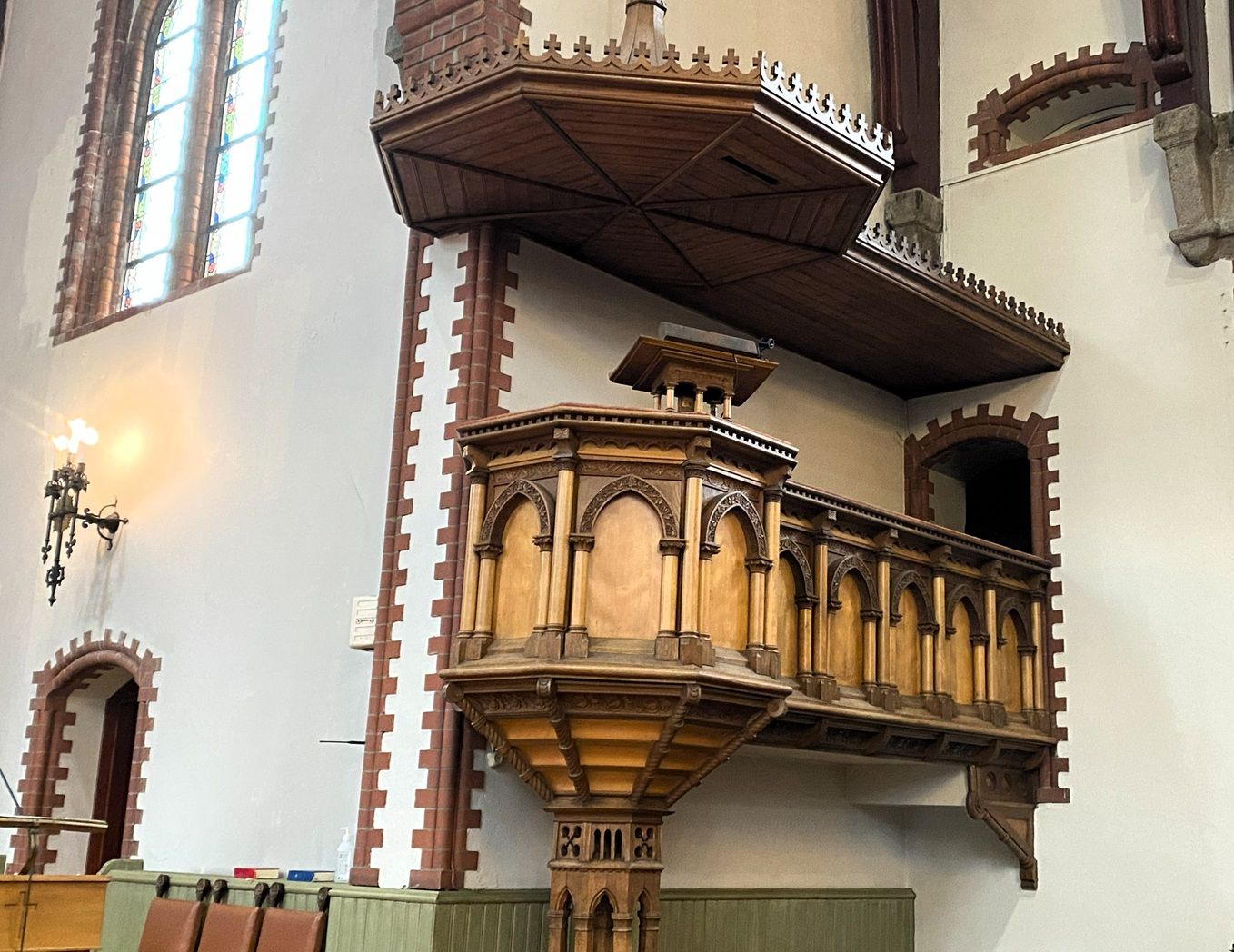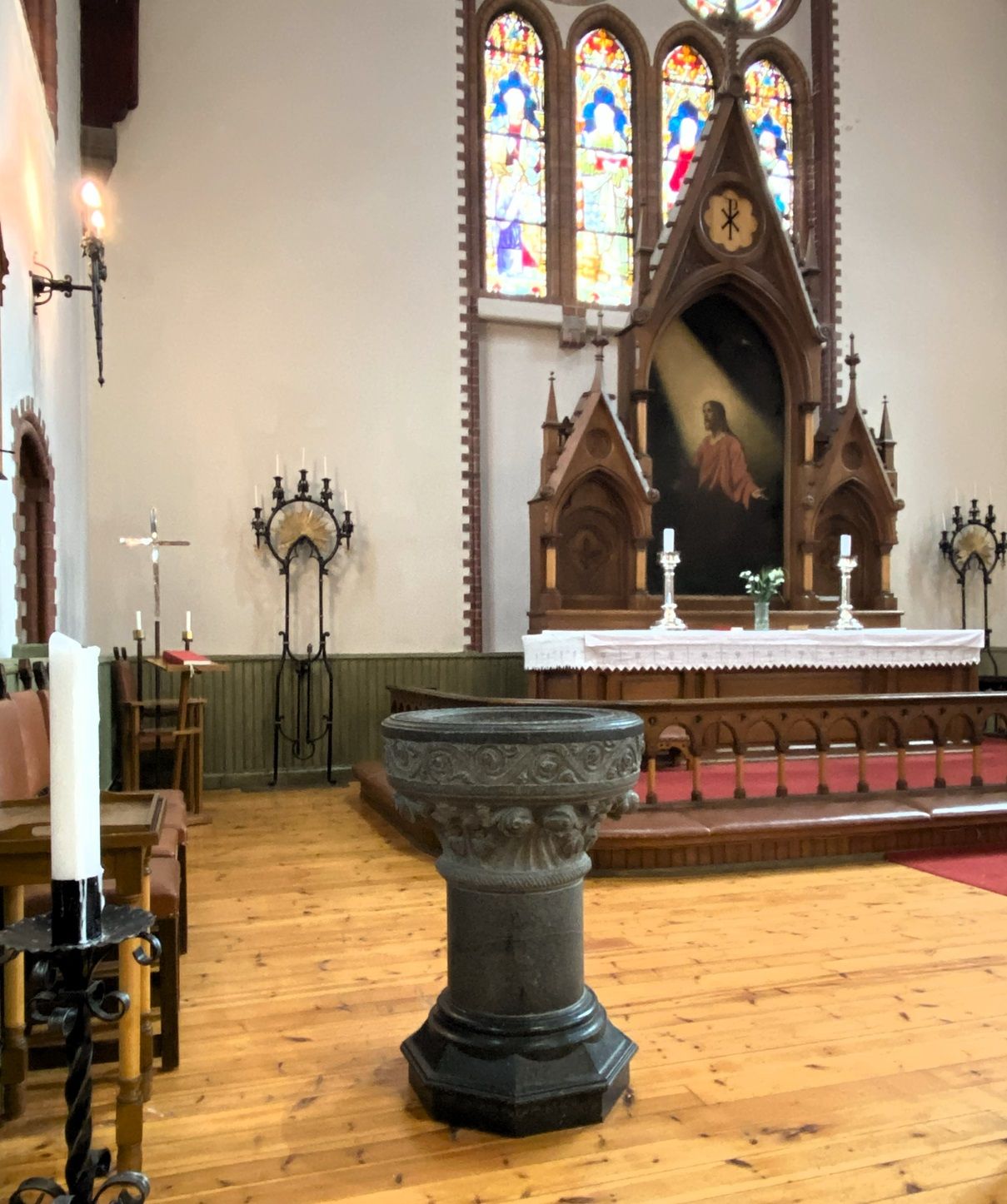


|
|
|
|||||||||||||||
|
|
||||||||||||||||
|
|
|||
|
|
Haugesund Our Saviours Church 
Located in the centre main shopping area of Haugesund. The plot of land on which the church stands was purchased in1885, for the construction of a church and received government approval in 1890 for the church to be built on the site. An architectural competition was held which was won by Einar Halleland in February 1899. Construction took place between 1899–1901 with consecration on 6 March 1902. Neo-gothic in style the large red brick building is constructed in a cruciform design, which resembles a cross. (Cruciform maybe a common or a Christian cross). The church incorporates a steeple situated over the main entrance; this rises to 160 feet above street level, which makes the church noticeable from a considerable distance. The large open space has seating for 850 to 1030 people. The interior displays an open roof truss design with ornate carvings displayed on the ceiling.  It also displays a chandelier depicting a large royal crown signifying that Jesus is King, while the four lights represent the evangelists, below these are another twelve lights representing the apostles. This was made in 1916 by Emanuel Vigeland.  Around the interior is a gallery, the one over the entrance contains the organ.  This organ was installed in 2004 and replaced the original organ.  From this gallery are the side wings which stretch to the transepts.  At the far end is the altar, font and pulpit.  The altarpiece is a painting of Jesus in Gethsemane painted in 1901 by Fredrik Kolstø. Over the altar are several stained-glass windows, the four evangelists were made in Germany in 1901 while above these are the three round windows depicting eternity.  To the left of the altar is the baptismal font carved in soapstone and is from the same period as the altar.  |
|
|
|
|
|||
All Photographs were taken by and are copyright of Ron Gatepain
| Site Map |